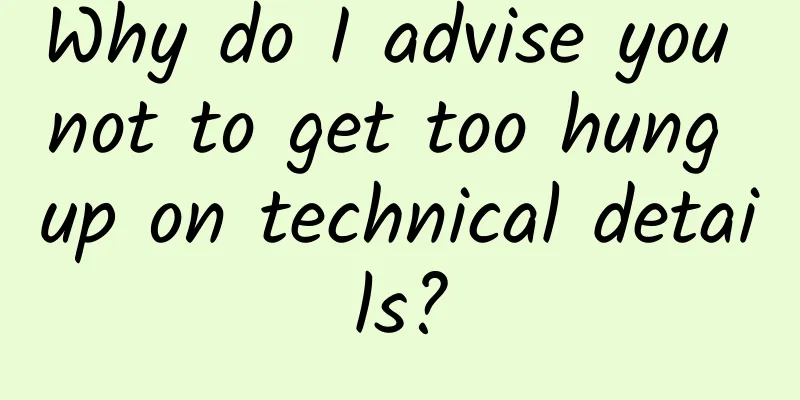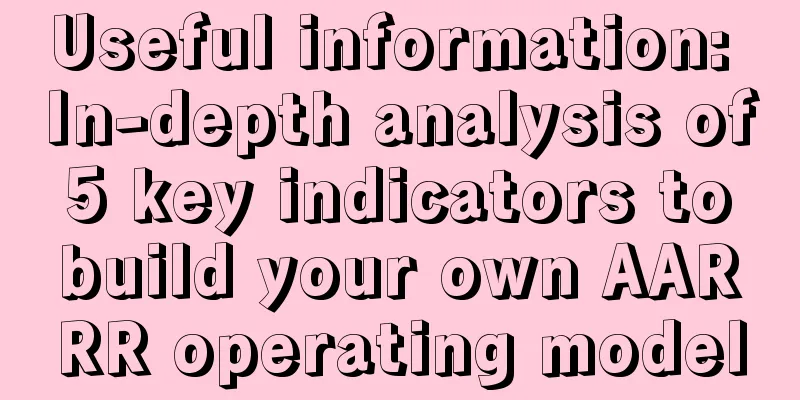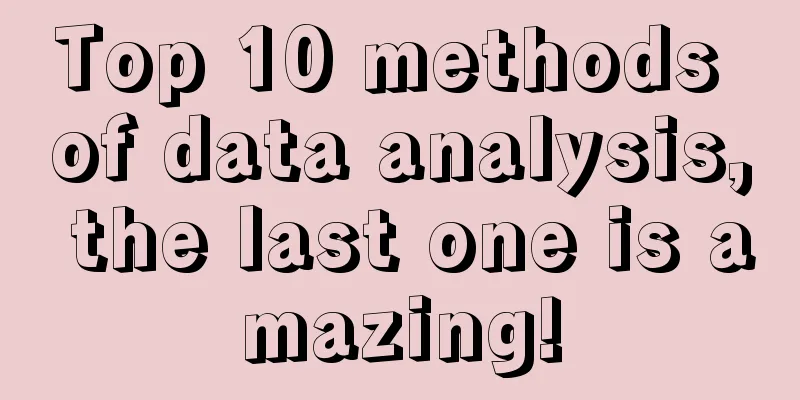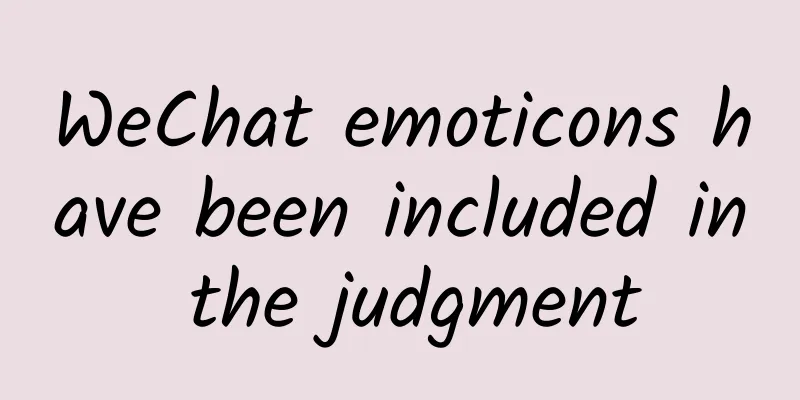Talk about four kinds of App product designs that will never die if you don’t do it
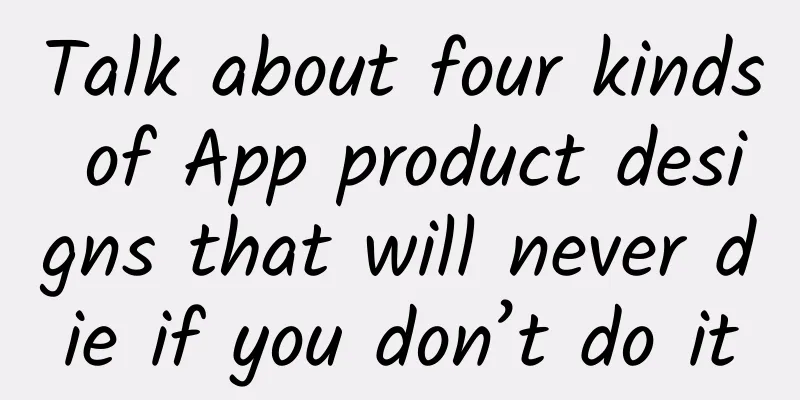
|
1. Superfluous products This kind of product has a common feature that it is powerful and finely classified. Most people cannot learn it once they get it. They need to study it carefully because there are too many functions, various classifications, and various tags. In addition, the version will be updated regularly and new functions will be introduced regularly. Its representative work is Sina Weibo. I have been using Weibo version 3.15 before, which is simple and refreshing. Later, Weibo released a new version and rarely updated it. But today I updated it. The main reason for my hesitation is that the old version is too slow and the performance is too poor. So I want to update to a new version faster. Who knows that after updating, I found many new functions. I released Weibo separately and made it into a "+ "Menu is placed in the middle of the bottom of the screen. After clicking it, a bunch of categories come out, including text, pictures, photography, check-in, comments, and more. There are 6 sub-items in "More", and a publish button has 12 sub-items. Posting on Weibo is a basic demand, and it is a core demand. Text is the most basic. Other needs are secondary and tertiary needs. For example, posting pictures has no clear priority and is superfluous. Such a product will only make users hate it more, and it is obviously copied from WeChat. Weibo is an extension of blog-type products, but it has to learn from WeChat IM-type products, which is very awkward to use. 2. Let users solve product problems A great feature of this kind of product is that it allows users to solve problems. When users encounter problems, they are generally asked about the model of the device they are using, the time, the screenshots they have taken, the system version, the problems they have encountered, error messages, etc. They ask a long list of professional questions, treating users as experts. If a product has a problem and the product manager doesn’t know about it, isn’t it a failure of their own operation? Good operations and products will proactively collect various problems from Internet users and various problems with the product, and proactively solve problems with the App product. There are also users who ask questions and ask them to read the manual and FAQ. To use your product, they have to read the manual. Some manuals are dozens of items long and it takes a long time to find a problem. Sometimes you can't find it and have to use the search function. As a result, many of the searches on the sites you develop are very poor and you can't find anything after a long time. The manual is the most anti-human product design. If a product requires users to cooperate with the manual to complete it, then it is a failed product. For novice users who don't have strong needs, they will uninstall it quickly. 3. Insidious product design There is another kind of product design, what is it for? It is purely to obtain user information. When users register, there are many options, such as email, mobile phone, region, etc. Many of them are required items, except for bank account and password. In many cases, users may use a product because of word-of-mouth introduction or seeing an advertisement, and come to experience it. As a result, when users are asked to fill in more than five pieces of information on the registration page, they may feel bored and give up using it. The representative work is the previous Jingdong red envelope. Only after WeChat red envelopes became popular, many apps imitated WeChat red envelopes. The purpose of WeChat red envelopes is to send red envelopes to everyone, while many other red envelope activities are for the purpose of defrauding information and increasing user consumption. Why do I say that? It is to give users a 20 yuan red envelope, and users must buy designated products. This is obviously a trap. Raise the price to earn 100 yuan from users, and then give users a 20 yuan red envelope. In this way, it is still profitable. It is recommended that product managers should not do this kind of insidious activity type product design. Now that network information is so developed, it is easy to know your price. You can know it by using a price comparison website. I have seen JD.com and Paipai often do such fake activities. Later, after checking on price comparison websites, I found that it was not a real price reduction. Such product design is not for users, not for Internet thinking, and it is obvious that the pressure of KPI is very high, and the activity design is not for users, not for product design. 4. Money-grabbing product design Apps are very popular nowadays. Many apps want to make money. They start collecting money just after they are installed and before you have played for a few steps. For example, I downloaded a dating app and just filled in the information when someone suddenly sent me a message. To click on it, I had to charge money to buy red flowers. Each flower cost one yuan, and I wanted 6. This is obviously too short of money. Before users have finished experiencing a product, pop-up windows and levels are started to stop users from collecting money. Such apps will only get smaller and smaller and will not last long. There are many such software, especially games and dating apps. Many dating apps have fake users, who find a lot of fake photos on the Internet to trick users into paying. In fact, the real product design is more about considering issues from the perspective of webmaster users, letting users dominate the product. However, in reality, many product managers often consider issues from their own perspective or the perspective of their bosses. This way of serious intervention in the product will not go far. There is a saying that goes, "If you insist on planting flowers, they will not bloom, but if you plant willows unintentionally, they will grow into shade." When you truly focus on the user's perspective, you may get unexpected results. Author: Mobile Internet Li Jianhua WeChat: tianyi86913 Statement: Any media forwarding this article must retain the author’s personal information, words, WeChat account, and source, otherwise you will be held accountable for copyright infringement. |
<<: Apple Pay Development Guide and Human Interface Guide
>>: 2014 Mobile Platform Summit Forum held in Beijing
Recommend
WeChat official website turns green, official displays design change history
On June 23, the official WeChat account "WeC...
The dumb way to promote App online, the qualitative change from 0 to 1 million users
There are some stupid ways to promote apps online...
Zheng Xiangzhou_68 Lectures on Business Model Innovation Cases
The course consists of 68 lectures on business mo...
Exploration and practice of intelligent film performance optimization
I. Introduction All editing tools have the abilit...
Promotion and data analysis: one article gives you a comprehensive view of the new media landscape
This article is quite long, and it more or less c...
Just took over a new information flow account and don’t know where to start? An article to help you
Many optimizers who have just started working wit...
Three steps to attract private e-commerce traffic
The essence of a private domain is to have long-t...
Why do 99% of self-media not make money? Here are the causes and solutions
With the rapid development of the Internet indust...
Fei Fan, Lao Gao's e-commerce class, "Douyin live streaming sales operation system course"
Resource introduction of Fei Fan's "Douy...
9 ways to attract traffic for offline promotion!
How can offline brand store merchants build a tra...
27 essential tips for making short videos
Recently I heard a friend share how to make short...
Song Yuehan's "Chinese Medicine Syndrome Differentiation Video" teaches you how to accurately diagnose syndromes, and you will understand it after learning it once
Training course video lecture content introductio...
How do brands plan their video account matrix?
Recently, we have observed that many brands have ...
How do you evaluate the EU’s unified charging interface?
Nowadays, there are more and more electronic devi...
MoKee OpenSource 51.1 2015-07-25 Officially released!
MoKee OpenSource 51.1 2015-07-25 Official version...



